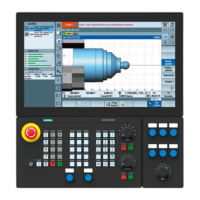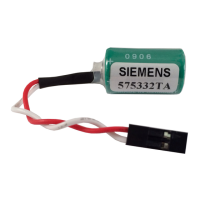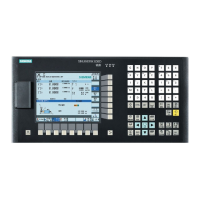FADAL MACHINING CENTERS
82 GENERAL INFORMATION MAN-0126_ R1
5.2 THERMAL
EXPANSION
5.2.1 OVERVIEW
Thermal expansion is a natural occurrence in materials subject to heat, and there are
several sources of heat in any machining operation. In addition, different materials react
to heat at different rates, and different subsystems of the VMC react to specific
machining operations to different degrees, further complicating matters. Finally, some
machining practices designed to save time may actually aggravate the expansion
problem. Fortunately, there are a number of ways in which the unwanted effects of
thermal expansion can be reduced to acceptable tolerances.
5.2.2 RECOGNIZING
THERMAL EXPANSION
Changes in positioning can have many causes, and correctly identifying the cause is
the key to solving the problem. Thermal expansion has a unique 'signature' which can
aid in recognizing it as the culprit in a given situation. Position changes that are due to
thermal expansion occur gradually over time, and continue to move in one general
direction at a more or less constant rate. The best way to combat thermal expansion is
to accept the inherent nature of it in a machining operation, and to take corrective
measures, like those suggested in this document, ahead of time.
5.2.3 ACCURACY AND
REPEATABILITY
It should be noted that when accuracy and repeatability are quoted for a machine,
thermal expansion is not considered. These values are measured and recorded only
when the machine and all of its components are thermally stable, usually by limiting test
repetitions and time duration so that thermal growth does not have a chance to come
into play. For example, a typical industry test for linear repeatability involves only seven
to ten moves away from and back to a position.
5.2.4 EXPANSION
COEFFICIENTS
The rate of expansion of any particular material, due to temperature, can be measured.
This rate of expansion is referred to as the expansion coefficient, and is measured per
degree per inch. Using this rate of expansion, and the temperature of the material, the
effects from heat can be predicted.
Formula: coefficient * distance * degrees of temperature change = expansion amount
For example, if a nut is 23 inches from the motor mount and the temperature of the
screw has changed 20 degrees, the screw length would have expanded .0029118
inches (.00000633*23*20 = .0029118).
Table 12-1: Expansion Coefficients for Specified Materials
MATERIAL LOCATION / USAGE EXPANSION
COEFFICIENT
Steel Ball Screws, Spindle, Fixtures, Sub
Plates, Tooling, part stock
.00000633
Cast Iron Head, Table, Column, Glass Scales, part
stock
.00000655
Aluminium Fixtures, Sub Plates, part stock .00001244

